[ad_1]
Book publishers share their picks for must-read 2016 open source-related book releases.
No Starch Press
(Contributed by Anna Morrow)
 The Car Hacker’s Handbook
The Car Hacker’s Handbook
By Craig Smith
304 Pages
Published: March 2016
With its focus on low-cost, open source hacking tools, The Car Hacker’s Handbook will give you a deeper understanding of the computer systems and embedded software in modern vehicles. The book begins by examining vulnerabilities and providing detailed explanations of communications over the CAN bus and between devices and systems. You’ll learn how to build an accurate threat model for your vehicle, reverse engineer the CAN bus to fake engine signals, exploit vulnerabilities, build physical and virtual test benches, and much more. If you’re curious about automotive security, The Car Hacker’s Handbook is for you.
Electronics for Kids
By Øyvind Nydal Dahl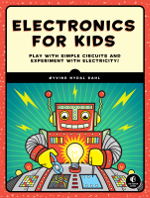
328 Pages
Published: July 2016
Electronics for Kids is perfect for feeding kids’ natural curiosity about electronics through hands-on projects. Kids (and the adults in their lives!) will build projects like an electronic coin tosser, an electromagnet, an electric motor, an intruder alarm, a musical instrument, a touch sensor LED circuit, and even a lemon-powered LED light. Along the way, they’ll learn how current, voltage, and circuits work. With clear explanations and fun projects, this book will have kids building their own circuits in no time.
To read more from Øyvind Nydal Dahl, author of Electronics for Kids, visit his Opensource.com author page.
Practical Forensic Imaging By Bruce Nikkel
By Bruce Nikkel
320 Pages
Published: September 2016
When forensic investigations involve digital activity, the proper handling of media evidence is critical. Practical Forensic Imaging takes a detailed look at how to use open source command=line tools to secure and manage digital evidence. Author Bruce Nikkel walks you through the entire forensic acquisition process and covers practical scenarios and situations related to the imaging of storage media. Practical Forensic Imaging is an invaluable resource for experienced digital forensic investigators wanting to advance their Linux skills and experienced Linux administrators wanting to learn digital forensics.
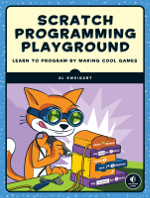 Scratch Programming Playground
Scratch Programming Playground
By Al Sweigart
288 Pages
Published: September 2016
Scratch is the standard language for teaching kids to program, with more than 14-million users worldwide. In Scratch Programming Playground, kids can learn to program by making cool games. Each game includes easy-to-follow instructions, review questions, and creative coding challenges that allow kids to make the games their own. Kids will make games like Maze Runner, Snake, a Fruit Ninja clone, a remake of Breakout, and even a game inspired by Super Mario Bros. From the author of fan favorite Automate the Boring Stuff with Python, Scratch Programming Playground proves that learning to program isn’t dreary when you make a game of it. To read more from Al Sweigart, author of Scratch Programming Playground, visit his Opensource.com author page.
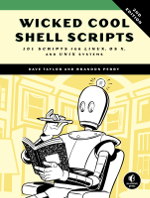 Wicked Cool Shell Scripts, 2nd Edition
Wicked Cool Shell Scripts, 2nd Edition
By Dave Taylor and Brandon Perry
392 Pages
Published: October 2016
An update to the beloved first edition, the second edition of Wicked Cool Shell Scripts offers a collection of useful, customizable, and fun shell scripts for solving common problems and personalizing your computing environment. This edition features 23 brand-new scripts, such as a ZIP code lookup tool, a bitcoin address information retriever, image processing and editing tools, and classic games like hangman. Whether you want to save time managing your system or just find new ways to goof off, you’ll love these wicked cool scripts.
To read more from Dave Taylor, author of Wicked Cool Shell Scripts, 2nd Edition, visit his Opensource.com author page.
O’Reilly Media
(Contributed by Susan Conant)
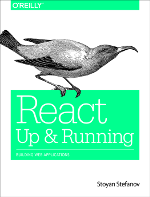 React: Up & Running
React: Up & Running
Building Web Applications
By Stoyan Stefanov
222 Pages
Published: July 2016
Hit the ground running with React, the open-source technology from Facebook for building rich web applications fast. With this practical guide, Yahoo! web developer Stoyan Stefanov teaches you how to build components—React’s basic building blocks—and organize them into maintainable, large-scale apps. If you’re familiar with basic JavaScript syntax, you’re ready to get started.
Once you understand how React works, you’ll build a complete custom Whinepad app that helps users rate wines and keep notes. You’ll quickly learn why some developers consider React the key to the web app development puzzle.
- Set up React and write your first “Hello world” web app
- Create and use custom React components alongside generic DOM components
- Build a data table component that lets you edit, sort, search, and export its contents
- Use the JSX syntax extension as an alternative to function calls
- Set up a lean, low-level build process that helps you focus on React
- Build a complete custom app that lets you store data on the client
- Use ESLint, Flow, and Jest tools to check and test your code as your app evolves
- Manage communication between components with Flux
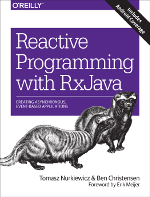 Reactive Programming with RxJava
Reactive Programming with RxJava
Creating Asynchronous, Event-Based Applications
By Tomasz Nurkiewicz, Ben Christensen
372 Pages
Published: October 2016
In today’s app-driven era, when programs are asynchronous and responsiveness is so vital, reactive programming can help you write code that’s more reliable, easier to scale, and better-performing. With this practical book, Java developers will first learn how to view problems in the reactive way, and then build programs that leverage the best features of this exciting new programming paradigm.
Authors Tomasz Nurkiewicz and Ben Christensen include concrete examples that use the RxJava library to solve real-world performance issues on Android devices as well as the server. You’ll learn how RxJava leverages parallelism and concurrency to help you solve today’s problems. This book also provides a preview of the upcoming 2.0 release.
- Write programs that react to multiple asynchronous sources of input without descending into “callback hell”
- Get to that aha! moment when you understand how to solve problems in the reactive way
- Cope with Observables that produce data too quickly to be consumed
- Explore strategies to debug and to test programs written in the reactive style
- Efficiently exploit parallelism and concurrency in your programs
- Learn about the transition to RxJava version 2
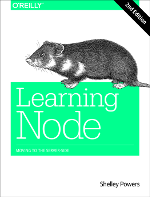 Learning Node, 2nd Edition
Learning Node, 2nd Edition
Moving to the Server-Side
By Shelley Powers
288 Pages
Published: May 2016
Take your web development skills from browser to server with Node—and learn how to write fast, highly scalable network applications on this JavaScript-based platform. Updated for the latest Node Long Term Support (LTS) and Node Current (6.0) releases, this hands-on edition helps you master Node’s core fundamentals and gain experience with several built-in and contributed modules.
Get up to speed on Node’s event-driven, asynchronous I/O model for developing data-intensive applications that are frequently accessed but computationally simple. If you’re comfortable working with JavaScript, this book provides many programming and deployment examples to help you take advantage of server-side development with Node.
- Explore the frameworks and functionality for full-stack Node development
- Dive into Node’s module system and package management support
- Test your application or module code on the fly with Node’s REPL console
- Use core Node modules to build web applications and an HTTP server
- Learn Node’s support for networks, security, and sockets
- Access operating system functionality with child processes
- Learn tools and techniques for Node development and production
- Use Node in microcontrollers, microcomputers, and the Internet of Things
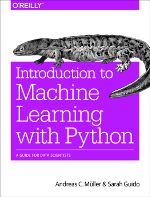 Introduction to Machine Learning with Python
Introduction to Machine Learning with Python
A Guide for Data Scientists
By Andreas C. Müller, Sarah Guido
392 Pages
Published: September 2016
Machine learning has become an integral part of many commercial applications and research projects, but this field is not exclusive to large companies with extensive research teams. If you use Python, even as a beginner, this book will teach you practical ways to build your own machine learning solutions. With all the data available today, machine learning applications are limited only by your imagination.
You’ll learn the steps necessary to create a successful machine-learning application with Python and the scikit-learn library. Authors Andreas Müller and Sarah Guido focus on the practical aspects of using machine learning algorithms, rather than the math behind them. Familiarity with the NumPy and matplotlib libraries will help you get even more from this book.
With this book, you’ll learn:
- Fundamental concepts and applications of machine learning
- Advantages and shortcomings of widely used machine learning algorithms
- How to represent data processed by machine learning, including which data aspects to focus on
- Advanced methods for model evaluation and parameter tuning
- The concept of pipelines for chaining models and encapsulating your workflow
- Methods for working with text data, including text-specific processing techniques
- Suggestions for improving your machine learning and data science skills
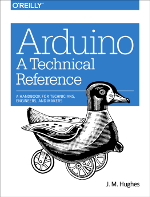 Arduino: A Technical Reference
Arduino: A Technical Reference
A Handbook for Technicians, Engineers, and Makers
By J. M. Hughes
638 Pages
Published: May 2016
Rather than yet another project-based workbook, Arduino: A Technical Reference is a reference and handbook that thoroughly describes the electrical and performance aspects of an Arduino board and its software. This book brings together in one place all the information you need to get something done with Arduino. It will save you from endless web searches and digging through translations of datasheets or notes in project-based texts to find the information that corresponds to your own particular setup and question.
Reference features include pinout diagrams, a discussion of the AVR microcontrollers used with Arduino boards, a look under the hood at the firmware and run-time libraries that make the Arduino unique, and extensive coverage of the various shields and add-on sensors that can be used with an Arduino. One chapter is devoted to creating a new shield from scratch. The book wraps up with detailed descriptions of three different projects: a programmable signal generator, a “smart” thermostat, and a programmable launch sequencer for model rockets. Each project highlights one or more topics that can be applied to other applications.
Packt
(Contributed by Richard Gall)
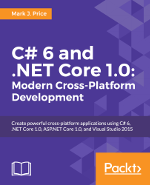 C#6 and .NET Core
C#6 and .NET Core
By Mark J. Price
550 Pages
Published: March 2016
There’s a lot of talk about open source going mainstream—Microsoft’s launch of .NET Core in June 2016 confirmed that fact. It redefined the way the development world saw one of the most established tech giants, and appeared to be an admission that the world hadn’t been going in the direction they thought it would decades earlier. This book provides developers with a comprehensive look at Microsoft’s powerful language and impressive open-source framework, designed to give readers fluency and confidence to build cross-platform applications. At 550 pages, there’s just about everything you’d need to know, which means it acts both as a great tutorial and a reliable resource. Open source might mean rapid change and constant iteration, but this book provides readers with a stable and trusted source of knowledge.
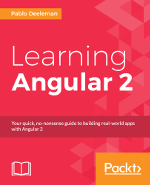 Learning Angular 2
Learning Angular 2
By Pablo Deeleman
352 Pages
Published: May 2016
Angular 2 was easily the most anticipated software release of 2016. Google kept the world waiting—it wasn’t until May that we properly got to see what the new framework actually looked like. That was when Packt released Learning Angular 2, a no nonsense and fast paced guide to the new features of the framework. Showing readers how to build Angular 2 components, demonstrating how to get to grips with the TypeScript syntax and working with directives and services, the book brings together everything the curious and ambitious web developer needs to get started with this cutting-edge framework.
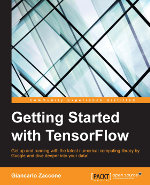 Getting Started with TensorFlow
Getting Started with TensorFlow
By Giancarlo Zaccone
180 Pages
Published: July 2016
TensorFlow was the surprise hit of 2016. But we probably shouldn’t have been so surprised. With machine learning becoming one of the biggest trends across the technology world, the arrival of a tool like TensorFlow, which is so easy—and enjoyable—to use, was inevitable. Getting Started with TensorFlow does exactly what it says on the cover—and it’s created specifically for those people that want to get up and running with machine learning as quickly as possible. From basic mathematics to neural networks and deep learning, this book proves that using software in a smart and impactful way doesn’t have to be a steep learning curve and doesn’t require you to wade through theory.
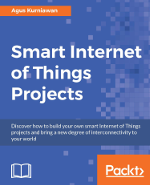 Smart Internet of Things Projects
Smart Internet of Things Projects
By Agus Kurniawan
258 Pages
Published: September 2016
The Internet of Things has been a buzzword for a little while now, but this year we’ve started to see it become more of a reality. And the point, really, is simple—you’ve just got to build it yourself. The book includes fun real-world projects, from building an automomous remote control car to speech technology, and is a great way to help you get creative.
 ReactJS Blueprints
ReactJS Blueprints
By Sven A. Robbestad
422 Pages
Published: July 2016
Angular 2 might have been hotly anticipated in 2016, but React has slowly been taking a hold of the JavaScript imagination for a couple of years now—in 2016, Facebook’s impressive library went mainstream. It’s also a tool that highlights the nature of the web today: dynamic, fast, and lightweight in our data intensive age. ReactJS Blueprints takes you straight into React, showing readers how to build a complete application with the library. It doesn’t just teach—it demonstrates how React works by showing you how to use it yourself.
[ad_2]
Source link